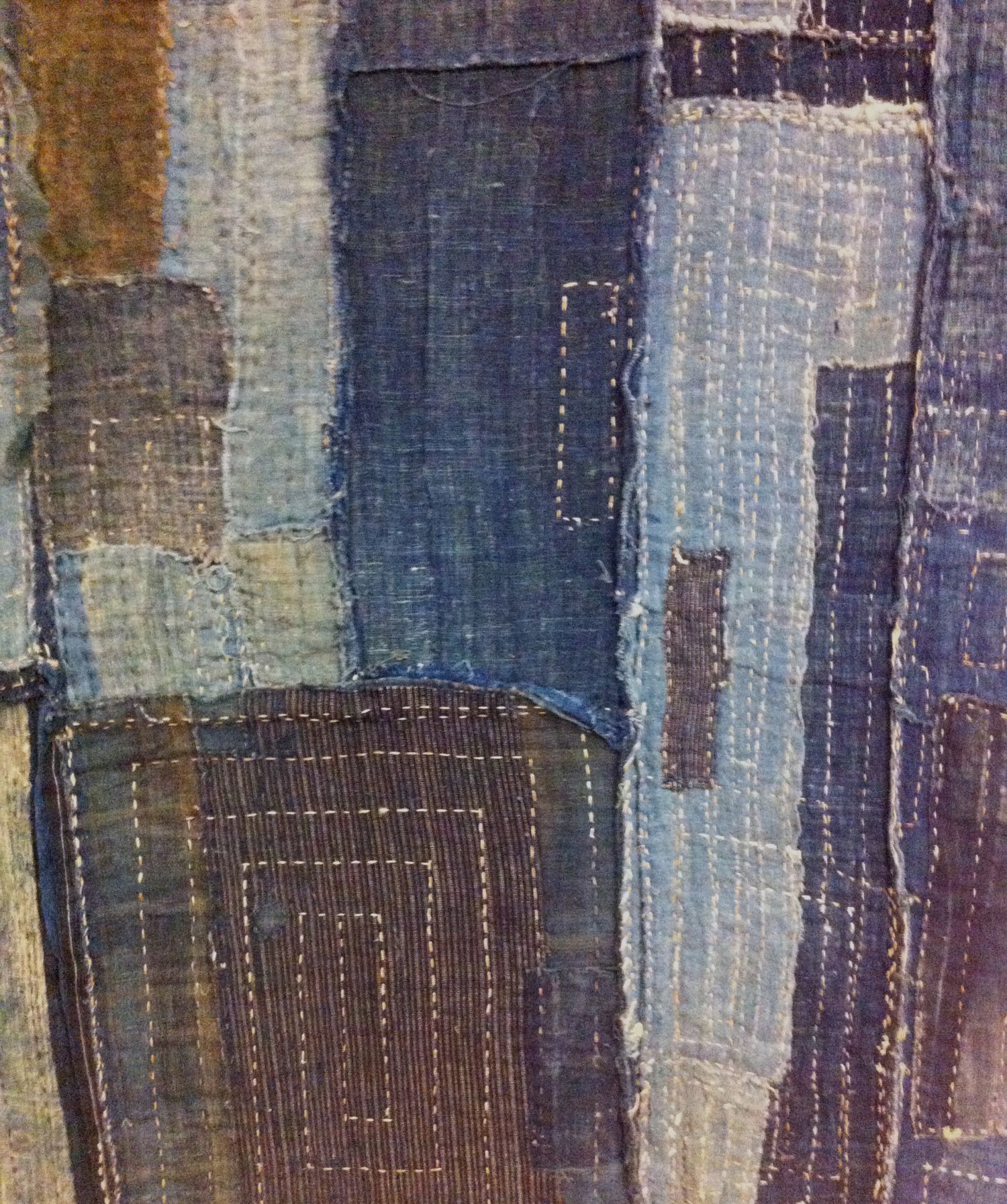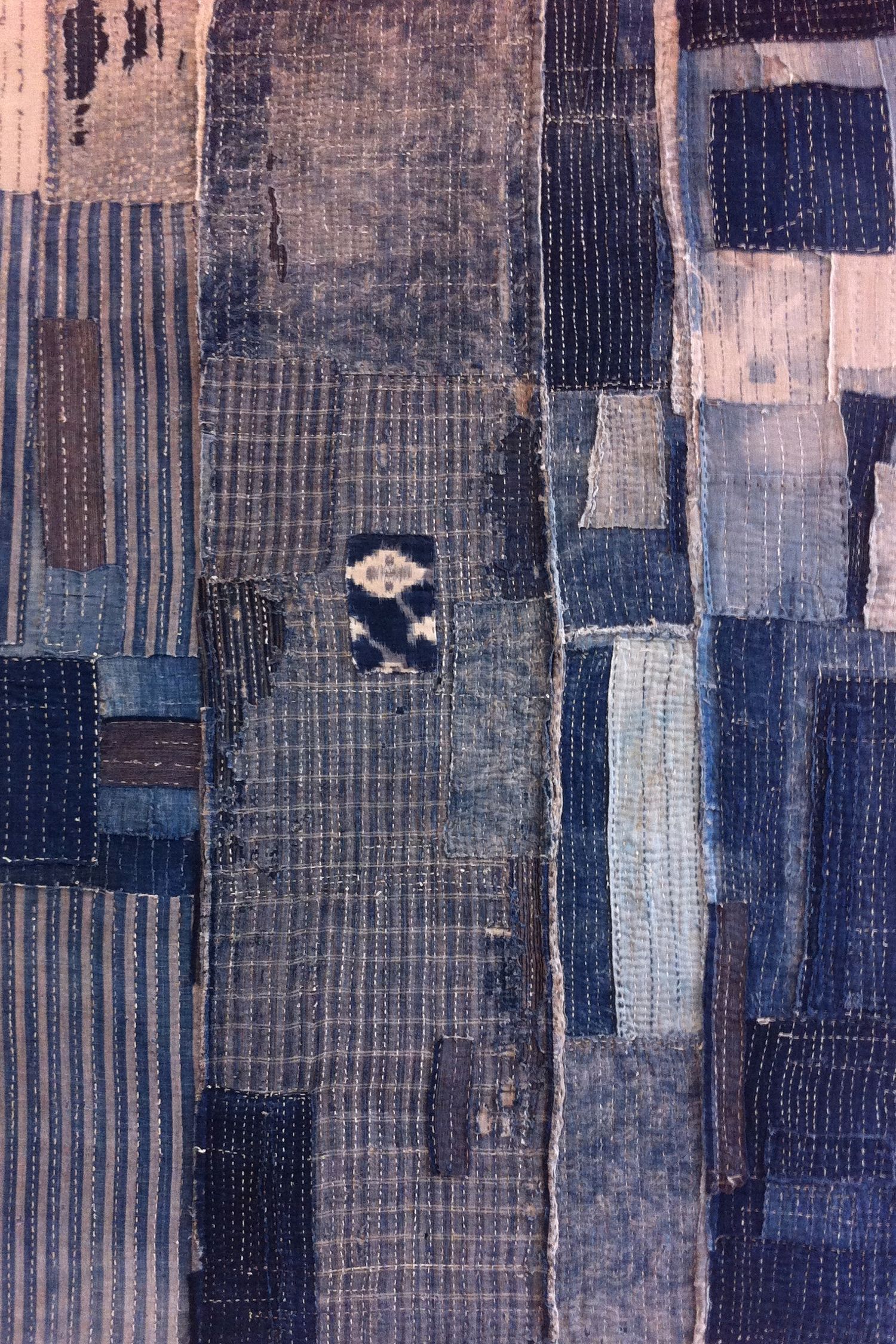I travelled to Cologne for the day on Friday to see an exhibition of Boro textiles. This was the same exhibition that was first shown at the Domaine de Boisbuchet in 2013.
First, a word about the photos. The museum allowed photographs provided I did not use flash. Since the textiles were displayed in low light this compromised quality. These images are the clearest I could manage ... with some significant editing to improve sharpness and clarity. Sometimes this is at the expense of colour accuracy.
Some things I learned:
- The museum made a link to kesa, robes pieced together by Buddhist monks from cloth they received as alms, originally rags. Ironically, since rich Buddhist followers would often donate precious textiles to show their devotion, kesa were sometimes made from rather splendid, embroidered silks. The exhibition included some gorgeous examples from the museum's own collection.
- Japanese peasants originally wore cloth made from local bast fibres - hemp, ramie, mulberry, wisteria, nettle. The softer and warmer cotton became popular in the eighteenth century ... but was only available to the rich. Rural people bought used, damaged cotton clothing from itinerant rag merchants or traders and mended or re-used the cloth.
- Sashiko is the term for the running stitch used either to mend cloth or to piece small pieces together into a larger cloth. Originally bast fibre was used. It was only once people gained access to softer, more pliable cotton threads (from the mid 19th century), that the decorative designs and patterns developed that we associate with the term sashiko.
Since I knew I was not going to get good photographs, I made lots of notes and rough drawings of the aspects that interested me. I was particularly interested in the variety of approaches to the stitching. There was no single approach, different examples showing the individual style and skill of the maker(s). Some pieces were so densely stitched that they looked woven, especially where the stitching was close and even. But then later repairs disrupted the original stitch pattern, creating interesting discrepancies. Another example was the complete opposite: the stitching was sparse - tiny stitches, widely spaced, creating a totally different rhythm.
The stitch lines commonly followed the outside edge of the patch and then traced a "square spiral" path into the middle. The most natural way to secure a square patch to a backing using a continuous thread with no stopping or backtracking. Some pieces were stitched with regular, closely spaced lines, others with more irregular, widely spaced lines. Idiosyncratic changes in direction as the stitcher had chosen their route around the cloth made interesting rhythmic patterns. I was struck by one piece where long, loose stitches followed convoluted paths across the patches for which there was no observable logic. Some looked like strange drawings ...
In many places stitches had worn away, leaving gaps in the stitch line or loose threads. Heavily patched areas created overlapping stitch lines that didn't always relate to the visible patch, revealing something about what was happening in the layers beneath it instead. This aspect really appeals to me.
More information:
- My previous blog post about the Somerset House exhibition in 2014
- Museum für Ostasiatische Kunst, Cologne
- Domaine de Boisbuchet
- Sri Threads - examples, with information, of boro textiles. Stephen Szczepanek co-curated this exhibition and provided many of the textiles from his private collection.

















